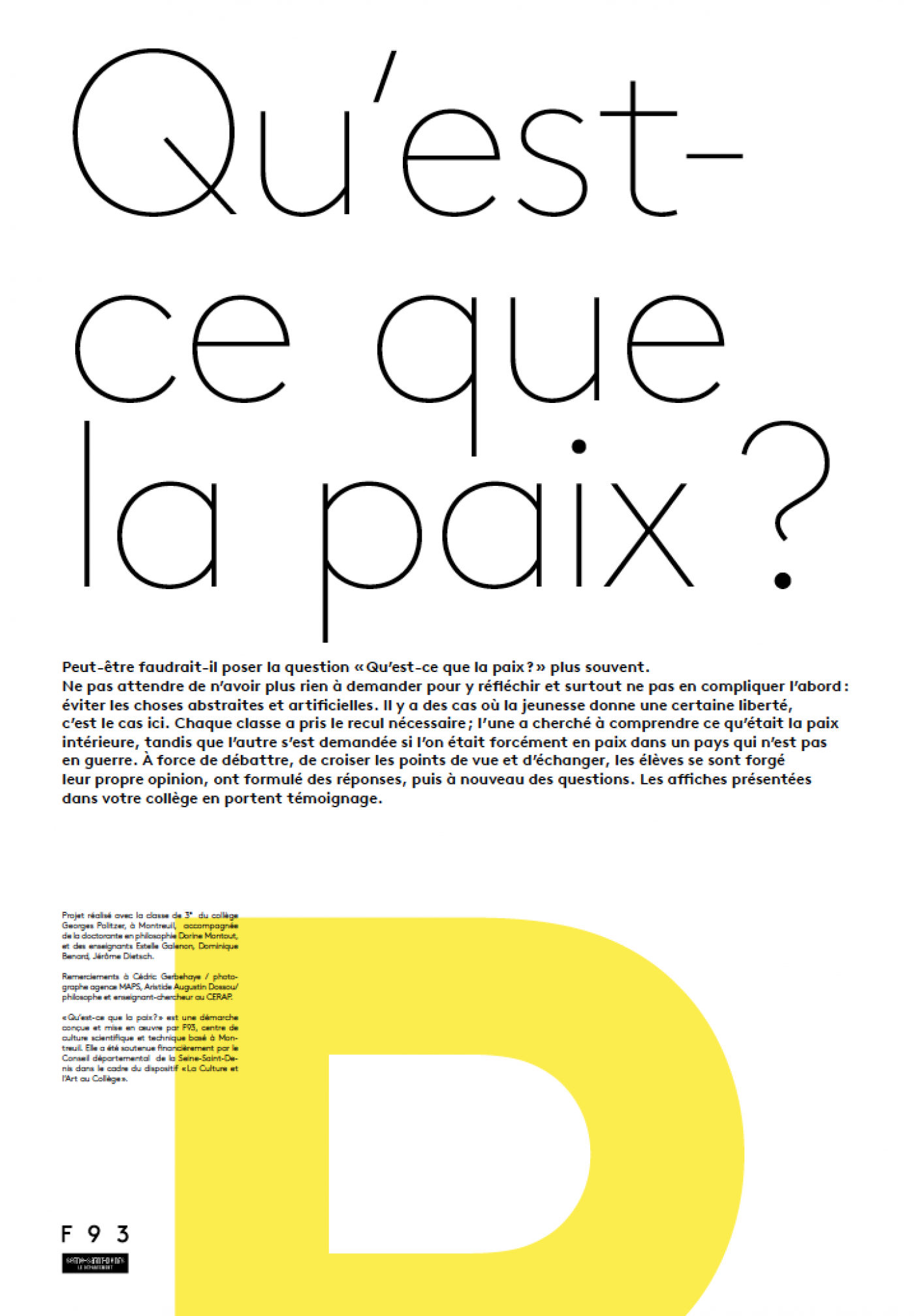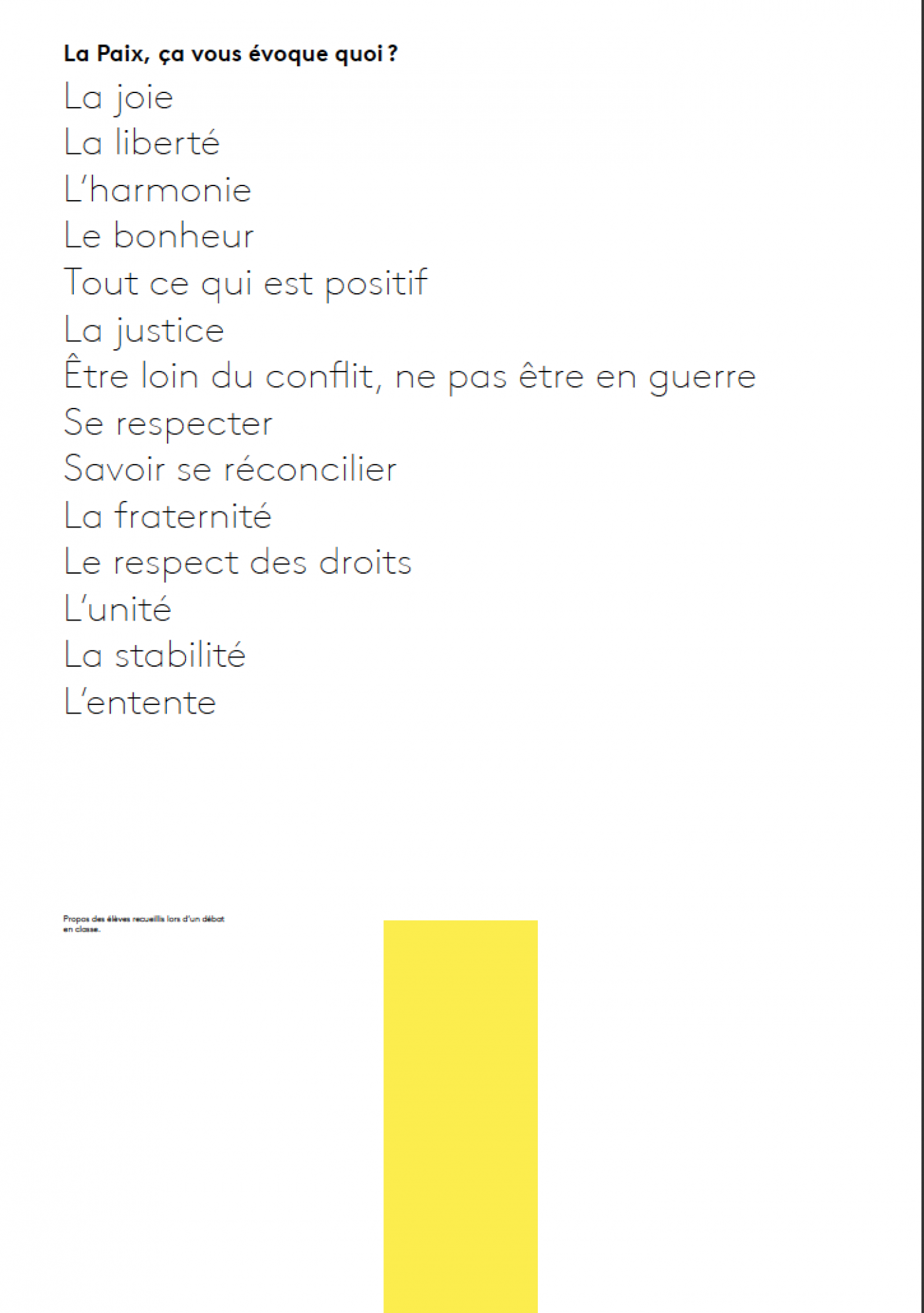- 2024
- 2023
- Ligne d'air
- 2022
- 2021
- The Forest System
- 2020
- A place to read
- Counterfactual
- Deep Sleep
- Fixing Sounds
- Ghost Populations
- Grey Matter
- Humanities
- Impôts.gouv
- My Precious One
- OK computer
- One for all
- Perfect Match
- Personal Borders
- Trial by fire
- Unconscious
- 2019
- Anonymous
- Daily science
- Houston 69
- Image and text
- La santé autrement
- Parts and labour
- Playing with fire
- Plu-present
- The art factory
- The legend factory
- The nuclear effect
- Unique every time
- Vertical
- What exactly is happiness?
- striking a chord
- 2018
- Animal images
- Connections
- Current affairs
- Extra space
- Les courts circuits
- Metamorphoses
- Off ground
- Playing with fire
- The Earth quakes
- The life of rays
- The ocean phenomenon
- The scope of cinema
- The struggle continues
- Top model
- Traces
- What is peace?
- 2017
- All about the climate
- Artistic territory
- Cars
- In all probability
- Inner journey
- Letter to a friend
- Planetarium
- Plants and us
- Polyptics
- Poster child
- Propagation of monotony
- Rocks unlimited
- Tour operator
- We, the presidents
- Youth culture
- 2016
- 3D universe
- Art curator
- Bioethics
- Colours
- Community radio
- Different books - digital design
- Different books - paper design
- Hands on
- Images - Mémoires
- In all probability
- Landscapes
- Meteors
- Microscopic
- Mirages
- Pantone Food
- The great outdoors
- The idiots' guide to teenagers
- The night
- There were several of them
- Under the surface
- 2015
- Books otherwise
- By prescription
- Denim
- Feet on the ground
- Intermediate schools in France
- Meteorologists
- Occupation: inventor
- Outdoors
- Sweet treats
- The art of love
- The climate in fiction
- To be completed
- Universal light
- Urban life
- What is today?
- Words and music
- 2014
- Are you modern?
- Aroma research
- Calculating sound
- Digital dreams
- Female landscape
- Hung up
- Infinite at top speed
- Les Grandes Tables
- Life in the laboratory
- Listening to the sacred
- Short trips into the working world
- The age of the earth
- Use and reuse
- Water
- Words and music
- Words and things
- 2013
- Aroma research
- As if by chance
- Behind the screen
- By what right?
- In praise of mixity
- Infinity at top speed
- Listening to the sacred
- Looking at animals
- Mass markets
- Memory
- On promotion
- Once upon a time: Art
- Segami
- Sensitive boundary
- Short trips into the working world
- The French factory
- Truth in sport
- 2012
- A simple movement
- Animalia
- Archigram
- Babel
- By what right ?
- Call it anything
- Dinner's served!
- Experience of the world
- Found objects
- Money
- Once upon a time: Art
- Perceptible split
- Phenomena
- Serious games
- Television
- Warmly dressed
- 2011
- Animalia
- Balance of power
- Breathless
- Chemistry year
- Cities and architectures
- Eurêka
- Experience of the world
- Food
- Found objects
- Homepage
- Once upon a time
- Public life
- Television
- Under constraint
- Video games
- Vostok
- What to wear
- 2010
- Chimie en cuisine
- Eurêka
- Evolution
- Jeux vidéo
- La bioéthique
- La richesse - philosophie
- La richesse - sociologie
- Les adolescents - photographie
- Les adolescents - sociologie
- Objets trouvés
- Quel grand Paris?
- Rapprochement des cultures
- Sous contraintes
- Télévision
- Village global
What is peace?
Since 2009, the Seine-Saint-Denis County Council has been backing “la Culture et l’Art au Collège (CAC)”. This project is based to a large extent on the presence in class for several weeks (40h) of an artist or scientist whose mission is to engage the students in a process of research and creation.
Tutors:
Claire Larroque, Dorine Montout / Philosophers
Project manager:
Florise Pagès
Objectives:
Although the issue here was peace, it was not about which countries are or are not at peace today. It was more about knowing how peace is set out between parties, how it is brokered and how it can be made to last. The students conducted a kind of moral and philosophical enquiry for which they had to make use of clues, documents and witnesses.
Workshops:
A Treaty for Peace
In 1919, in the aftermath of the First World War, a treaty was drawn up in Versailles. The students analysed this official document and discussed its relevance, realising that it is difficult to draw up a treaty such as this without allowing the enemy to participate, that perhaps responsibility should not be borne exclusively by the enemy, and that despite what was written, not all the ideas championed by the treaty have lasted, etc. The document the students analysed led to their studying other texts of different natures in order to grasp the formulas used, the vocabulary and the diversity of approaches encompassed by this notion.
Global Players
The class pursued its quest for information to examine war reporter Cédric Gerbehaye’s interviews with child soldiers in the Congo trying to return to a “normal” life, or how to rebuild one’s life after a genocide, the problematic role of the clergy in the quest for peace, can the army be trusted to protect its people, and so on. With anthropologist Elisabeth Claverie, the students addressed the way in which the International Criminal Court deals with crimes against humanity and the approaches for reconciliation, forgiveness, recognition of crimes and public apologies that have been implemented to achieve peace. In addition to this, the students researched and discussed the major global players for peace such as NGOs, pacifist movements, Nobel Peace Prize winners, etc., and the means at their disposal.
Making Peace
The group drew up a list of the main arguments put forward by peacemakers, analysing them to pick out shared positions and try to define peace. This illustrated the extent to which the answers are always precarious and showed how positions can vary depending on the situation. The discussion naturally led to the question of finding out whether or not the students felt at peace in their own country, even if it is not at war, and why, raising sensitive issues for the teenagers about inner peace, feeling safe and the regard of others.
Showcase
A wide variety of discussions, extracts from interviews, written correspondence, pictures and texts was complied suggesting avenues to explore to define the notion of peace. The work was presented as posters displayed in the school for everyone to read.
Acknowledgements: Elisabeth Claverie / Anthropologist, Cédric Gerbehaye / photographer, Aristide Augustin Dossou/ philosopher et reseacher
Outings :
- Participation in a UNESCO campus with the theme “The United Nations and Peace”, UNESCO
- Guided tour of the permanent collections from the First World War, Musée de l’Armée, Les Invalides
Participating schools:
- class 3è C, collège Henri Sellier, Bondy
- Class 3è 2, collège Georges Politzer, Montreuil
Graphic design: Biblis Duroux







